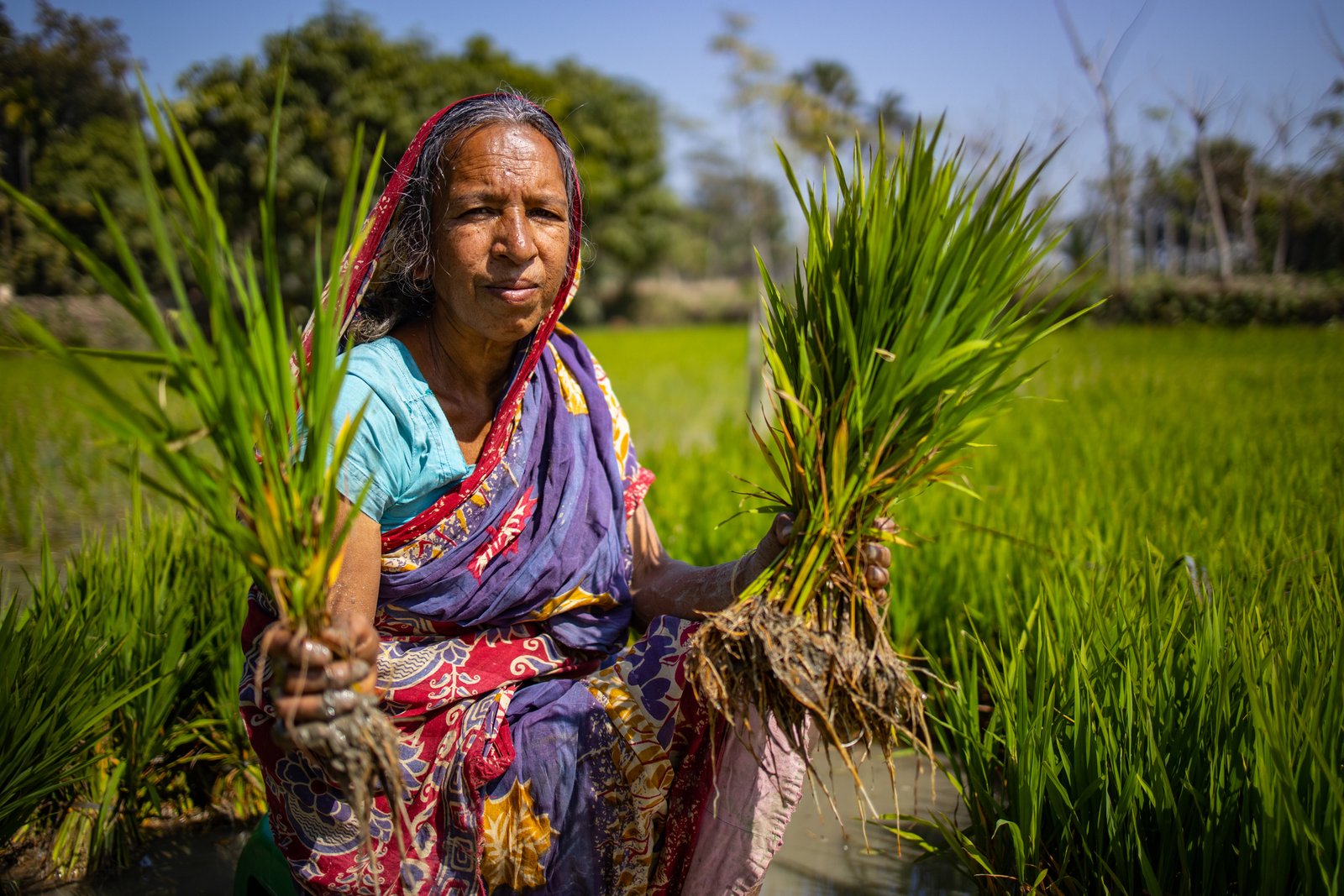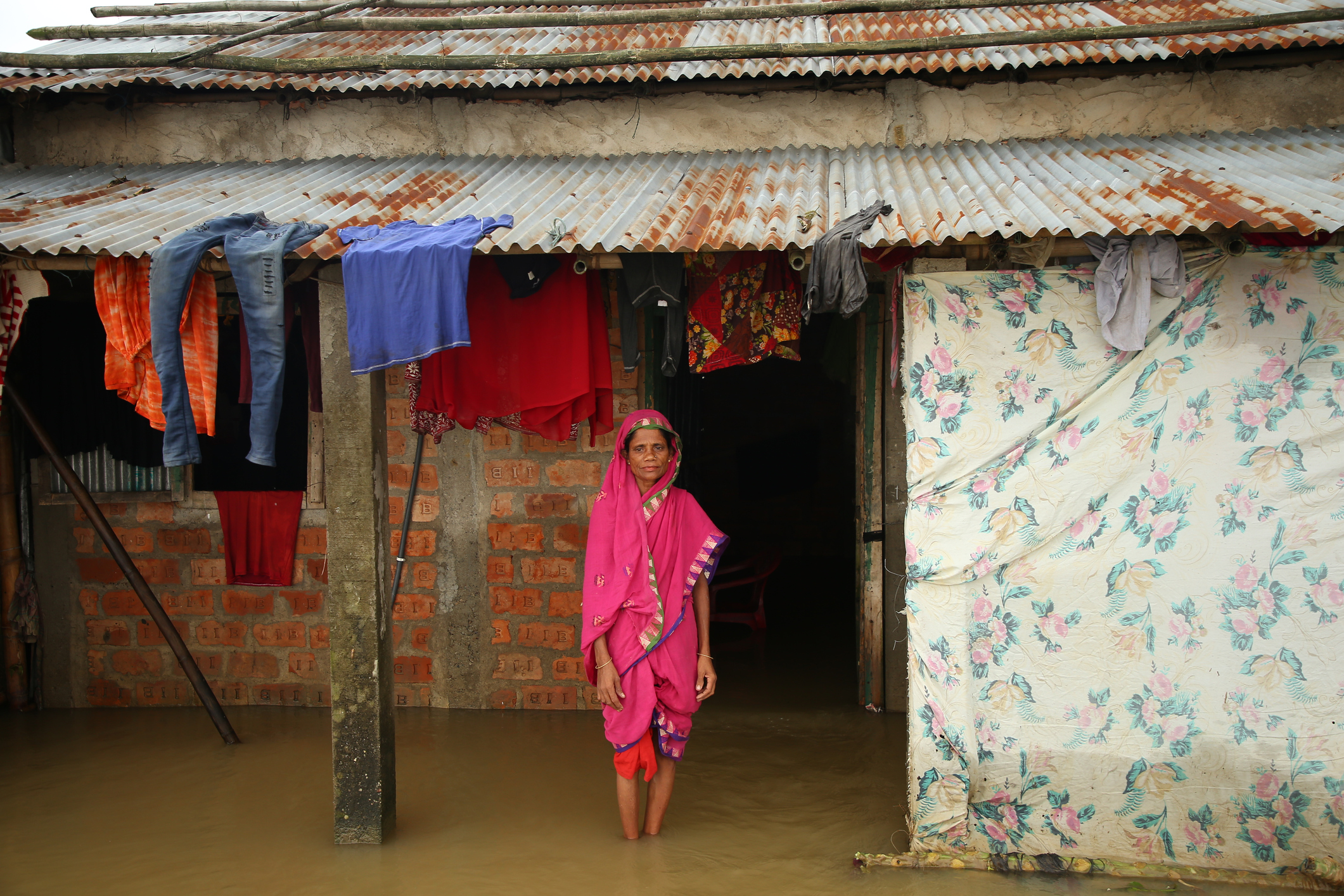Across the developing world, rising temperatures and the environmental disasters that follow are driving people from their homes. GlobalDev has published a series of columns on the growing challenge of climate migration: its impact on jobs, wellbeing, and food security – and the need for urgent policy action.
In the small city of Avignon in the south of France, the sky turns orange pink with grey tints. It looks like the most beautiful sunset I have ever seen, but it’s still too early for the sun to be going down. As I cross the bridge, under the summer heat, feeling the salty taste of sweat running across my lips, I turn my head to the right, then to the left: on both sides, huge clouds of smoke are finding their way into the sky.
The forests surrounding Avignon are burning. As I walk into the city, ashes start falling from the sky like snow. My stomach ties up in knots: climate change never felt so real – and it never felt more frightening.
As Avignon and many other cities around the world are experiencing record high temperatures – forcing some to change their summer habits and others to leave their homes – GlobalDev is focusing on a topic that doesn’t make the news often enough: climate migration.
Climate migrants are people who have been forced to leave their homes because of environmental disruptions. The United Nations High Commissioner for Refugees (UNHCR) estimates that since 2008, an average of 21.5 million people per year have been forcibly displaced by events related to climate, such as floods, storms, wildfires or extreme temperatures. This number is not expected to fall, and the Institute for Economics and Peace (IEP) predicts that 1.2 billion people could be displaced globally by 2050 due to climate change and natural disasters. Here is what our authors have taught us about climate migration.
In his article, Sensible migration policy for a climate-disrupted world, Robert McLeman explains that while we have enough data to give us certainty about the future of climate migration, most governments choose to do nothing about the increasing risk of millions of people migrating for climate-related reasons.
As he explains, we have the scientific knowledge to understand and predict the phenomena that climate change will cause, we know the locations most at risk of experiencing the worst effects, and we know how many people live there and how many more will be living there when the worst effects hit.
We also know that ‘without immediate action to reverse the underlying drivers of climate change, the physical impacts will accelerate and become much worse within the next 50 years if we’re lucky, the next 20 years if we’re not.’ Yet governments stay inactive.
McLeman calls for immediate action and gives several recommendations. Most importantly, he urges governments to make the transition to a low-carbon economy as quickly as possible.
He also calls for loosening migration policies to allow people living in high-risk areas to migrate with dignity. Governments should stop treating migrants as threats to sovereignty and security, he argues: indeed, as research shows, environmental migrants integrate easily into their host countries.
Sensible migration policy for a climate-disrupted world
In their article, Rising temperatures: the impact on employment and migration in rural Mexico, Katrina Jessoe and her colleagues perfectly illustrate the predictions that McLeman mentions with the example of Mexico.
The number of extremely hot days in rural parts of the country is rising, and it will continue to do so. Analyzing nearly 30 years of nationally representative household survey data, the authors find that extreme heat reduces the probability of local work in many Mexican regions. As a result, some local workers, mainly farmers, have been migrating, either to urban areas of the country or to the United States.
The authors use these data to project changes in rural employment. They find that ‘under a moderate emissions scenario, there is a decrease in local employment of up to 1.4% and an increase in migration to other parts of Mexico and to the United States of up to 1.4% and 0.25%, respectively.’ Poorer households will suffer most from these changes since ‘their local employment opportunities are most sensitive to extreme heat.’
Rising temperatures: the impact on employment and migration in rural Mexico
Poor households are also most at risk in cities hosting climate migrants from rural areas. In his article, Food security in megacities: climate migration and informal food systems, Mohammad Moniruzzaman explains that climate migration leads to growing urbanization, which in turn increases the risk of food insecurity among the urban poor.
He cites the example of the Bangladeshi capital of Dhaka, which each year receives half a million migrants moving from coastal and rural areas. These displacements, mostly caused by weather-related events, shift the problem of food insecurity from rural to urban areas.
Moniruzzaman explains that in Dhaka, climate-induced events disrupt the formal food supply chain. Informal food systems, which are more resilient, are what keep the city running during disasters. Moreover, informal markets are more accessible and affordable to the urban poor: one study shows that in Dhaka, ‘every second city dweller depends on these informal markets for their food procurement.’
Moniruzzaman calls on governments of megacities like Dhaka to consider informal provisioning as part of the solution to reduce food insecurity and to integrate informal food systems into the urban food system.
Food security in megacities: climate migration and informal food systems
New research and resources on climate migration
You can navigate additional resources on migration research from the Global Development Network’s (GDN) wider work:
- A call for proposals is currently open for multidisciplinary teams interested in the topic ‘Integrated Approaches to Migration/Mobility in an Era of Rapid Global Change’. This is a Collaborative Research Action by the Belmont Forum, in partnership with FutureEarth, the National Science Foundation of South Africa and GDN. Deadline: 12 August2022.
- GDN has been collecting the experience of researchers working on migration, with a focus on different research methods. The ‘Deep Dive’ videos are available on GDN’s YouTube Channel.
- Browse further featured studies on migration from our network.
And if you are a researcher interested in writing about climate migration (or other topics related to development and the environment) for GlobalDev, please read our one pager and style guide and send us your proposal at editors.globaldevblog@gdn.int.









